Machines that have owned me
Certain machines, gadgets, and technology have been like steadfast friends throughout my years. During some of the rough times of youth, it's not exaggerating to say they pulled me through. If they, in turn, could tell their side of the story, and maybe commiserate with each other, their tone might not be so appreciative: all of them were destined to receive excessive use and undergo alteration and experimentation by an amateur intent on learning by doing, with a lot of mistakes mixed in. Apologies and thank you, old friends.
This will be my recollection of some of those machine friends that I'll expand as such fond memories crop up.
1969 Chevy Bel Air#
The Bel Air was originally owned by my grandfather and landed with my dad via inheritance about the time I was nearing driving age. I promptly began to lobby for it to be bequeathed to me, eventually wearing my parents down. It had the 327 cubic inch V8 (last production year for this engine, I believe) and a 3-speed automatic transmission. This car was the victim of me learning auto maintenance and was a trusted companion into my early twenties. A family friend on whose farm I worked after school each day during one of my teenage years happened to be a gifted auto-body hobbyist; he kindly allowed me to barter some of my cow-milking and field work hours compensation for using his farm shop to do some body repair and a factory-color repaint of the Bel Air -- he was a good tutor and a kind soul. My sister has pointed out that the interior bore the faint reminder of my grandpa's Swisher Sweets cigar smoke throughout all of its years.
The Bel Air is shown below prepped for an end-of-summer return to college for another semester. It is loaded outside and inside with all of the belongings -- including my AAL tower speakers -- needed to fit out both my dorm room and my sister's. Its trunk was spacious, and on at least one occasion concealed two friends in the name of cutting our admission cost in half when entering the local drive in theater.
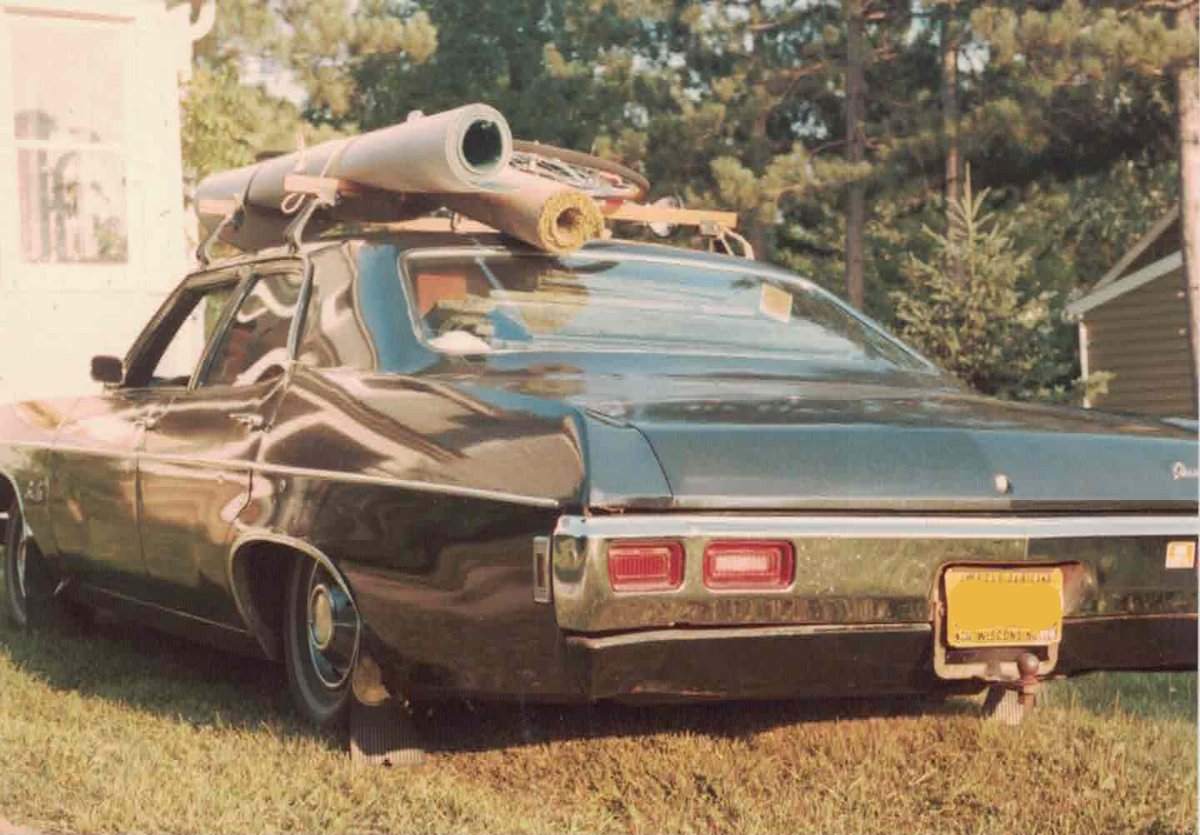
1971 Gilson 420 snowmobile#
I convinced my parents to let me buy this used snowmobile from a friend of a friend in the winter of 1977. Almost any other make and model would have been more appealing, but a cash-strapped kid from a thrifty family takes what he can get. It had an overmatched one-cylinder Kolher 294 CC engine with a temperamental Tillotson carburetor. Wrenching on and venturing about on the Gilson was a merciful means of escapism during a couple of awkward and depressing years. I even spent a significant chunk of my spare time one summer giving the Gilson a makeover -- replacing the ugly orange paint with black and reupholstering the seat. Wisconsin winters could be counted upon for a good amount of snow in those years, but I still pushed the limits of "how little snow is enough?" at the beginning and end of the seasons to maximize my riding/escape time.
I was not a picture taking kid (would have involved diverting precious dollars to film and photo development rather then gasoline and tools), so I can only offer this parts-manual cover photo to show you what the humble Gilson 420 looked like (pre makeover, of course).
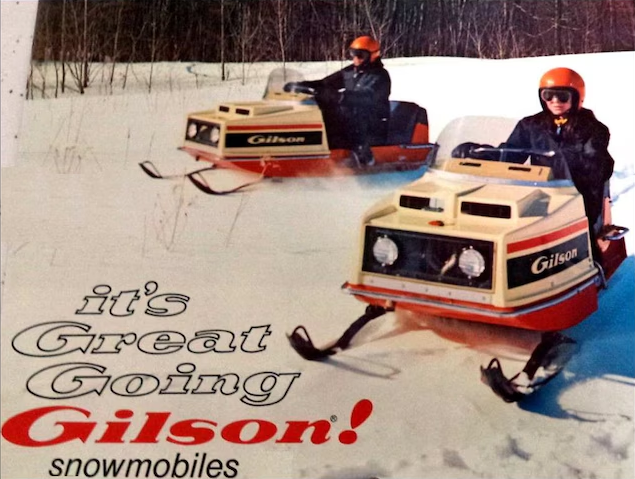
1973 Honda CB450 K6#
Confession time: I was among the fringe of college students whose world was rocked by reading Robert Pirsig's Zen and the Art of Motorcycle Maintenance. Together with the cerebral impacts of the book, I was overcome by a need to own and commune with a motorcycle. I'd barely started shopping around when I learned a family friend needed to sell a CB450; I knew it was a good option, but the several years to follow established what a steadfast and elegant machine I had purchased. I had plenty of quality time doing maintenance on this bike, yes, but it was a Honda with a full measure of legendary Honda quality, so it didn't place heavy demands on its steward. It saw a lot of commuting and did a fair amount of moderate trips and joy rides with young-adult me as well, and it delivered on the Zen union Pirsig had inspired me to seek.
Again, I seem not to have taken or kept any pictures of this bike, but I tracked down the sale-listing pic below, which is spot on except that mine had a stylish and useful chrome tail rack.
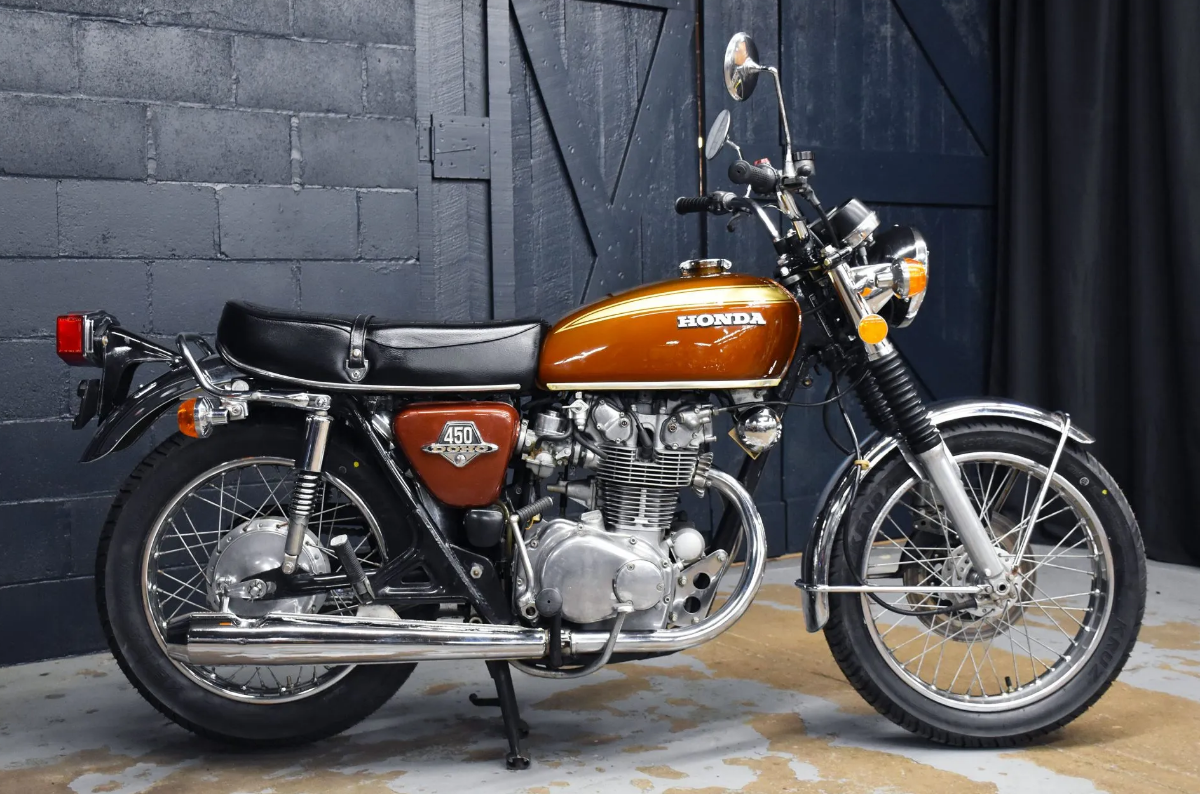
Cox control-line model biplane#
When I was in about 4th grade, control-line model airplanes created a bit of a craze with a few nerdy kids and teenagers in my small town. I was one of the nerds infected by the craze, and soon became the owner of the Cox plastic biplane model shown below (I don't recall if it was a gift or if I bought it with some of my lawn-mowing income). Being string-mechanical rather than radio controlled made the planes affordable on a kid's budget like mine. As illustrated in the first image below, control-line model planes were tethered to a control handle in the hand of an operator who served as the turning center hub around which the plane would fly in circles. Two strings ran from the plane to the operator handle, where rocking that handle up or down resulted in the two strings moving a rocker mechanism in the plane that controlled the elevator pitch. So the operator was in command of the pitch of the plane and with some practice could do impressive stunts. Turning in circles was never more fun than this. My plane had Cox's "baby bee" engine, which ran on a methanol-based fuel -- get it started, dial-in the fuel mixture, and send it into the sky. I tore this plane down and re-assembled it a number of times, in some cases to temporarily repurpose the engine and prop to power model boat or car ideas that were failed experiments (nobody was injured). It was a fine way to learn the fundamentals of combustion engines, and an economical distraction that was only moderately messy. In hindsight, it seems likely neighbors -- and probably my parents and sisters-- were happy when this noisy hobby finally lost my interest.
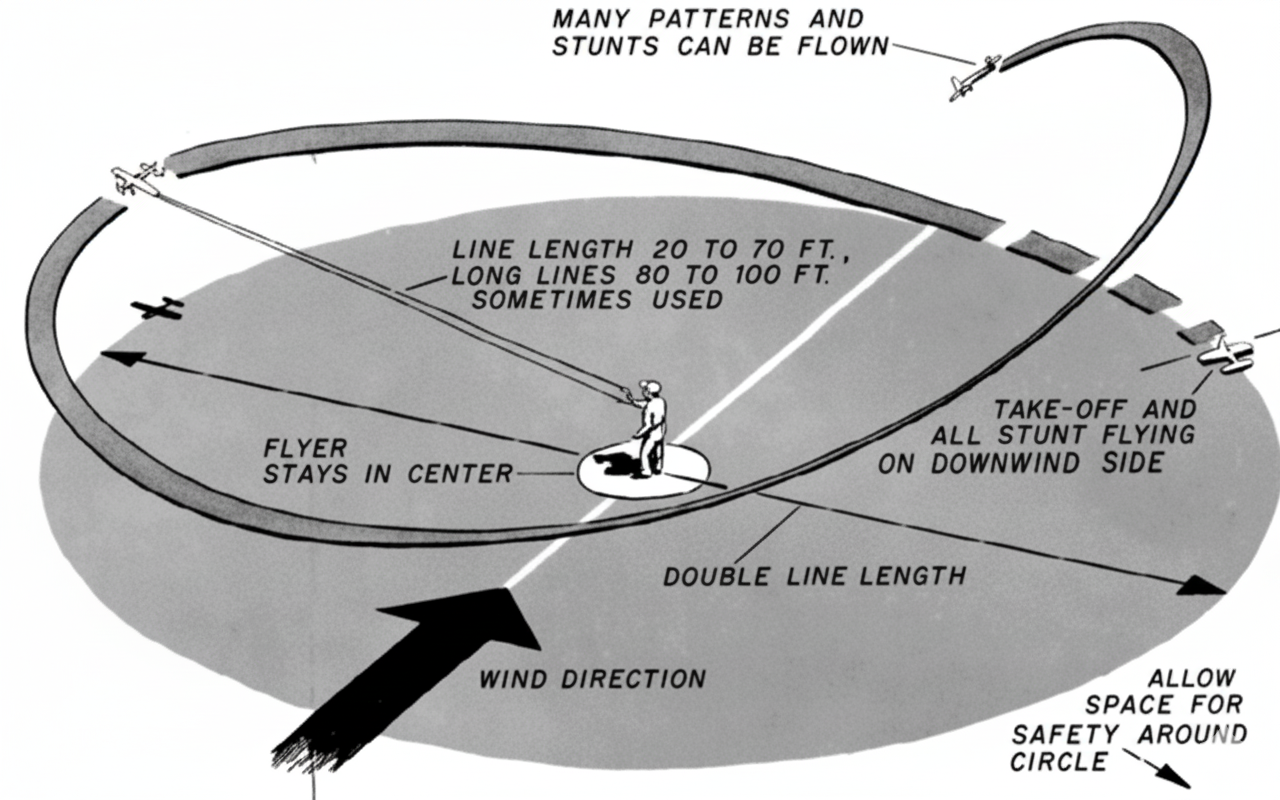
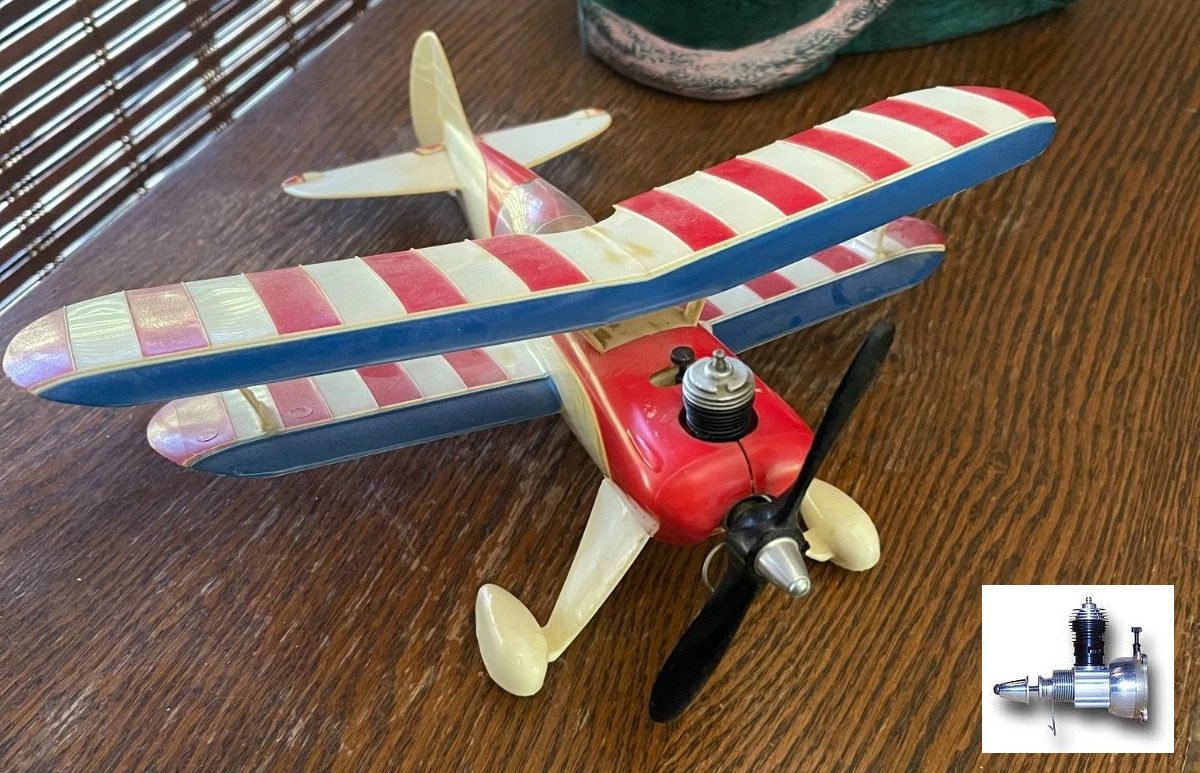
ArcherKit multimeter#
I recall that I received this kit as a Christmas gift (Christmas 1976) from my parents -- a result of extensive lobbying. Such Archer kits were sold by the infamous Radio Shack chain of stores (in addition to me, I'm guessing many technology nerds of my age are indebted to Radio Shack for bringing electronic components to their town or one nearby -- their free, print catalogs were the basis of much scheming and dreaming as well).
I was beginning to dabble in electronics at this point, mostly in the form of tearing things apart, and I had a corresponding need to measure voltages and resistance. I also had a soldering gun (yes, a gun, not the more appropriate pencil-style iron), so, when I spied the ArcherKit 28-4012A in the Radio Shack catalog, its low price, plus the fact that it was electronics I could build, convinced me this was the multimeter for me.
To the kit and its instructions' credit, despite my crude tools and rudimentary soldering knowledge, I was able to assemble the kit into the intended, fully functional multimeter. Also to its credit, the meter served my basic testing and troubleshooting needs -- and I mean for every imaginable thing electrical or electronic in my world -- for several years. I only replaced it when I started technical school and truly required a more sophisticated multimeter.
The pics of the multimeter and part of its operating instructions, below, were posted by one Mark Heckler in a similar homage to the meter that he posted on a website of his (which now seems to be dormant).
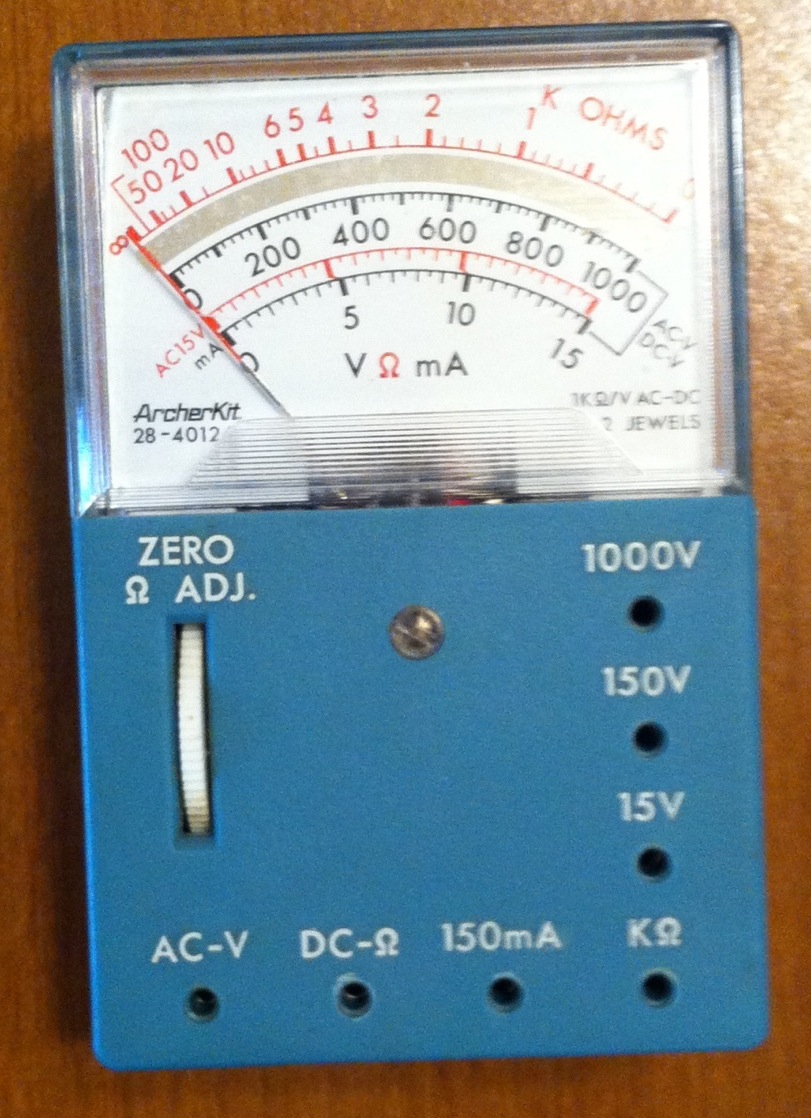
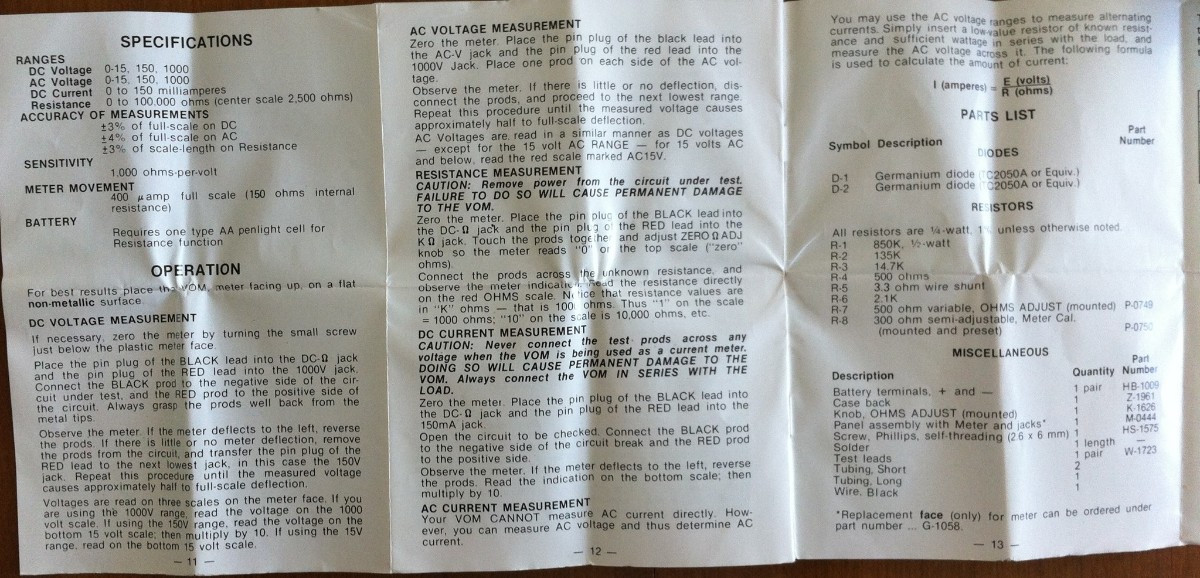
Leave a comment
Submissions are subject to review and approval
